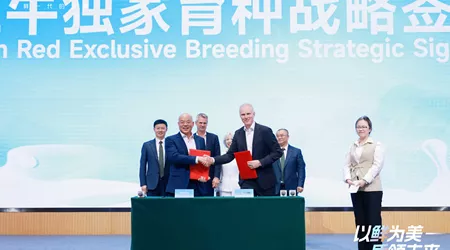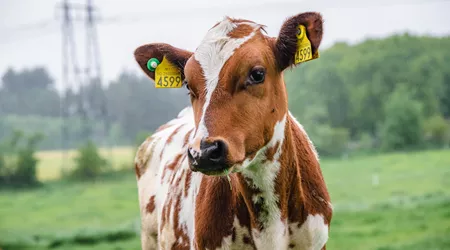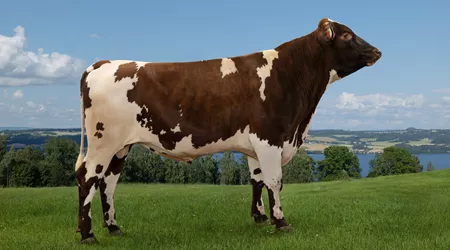The changes that will be introduced will provide more reliable indexes, with no major changes in the animals' index level. Preliminary calculations show that most Norwegian bulls will change within +/- 2 points for each trait
The annual production properties include kg milk, kg protein, kg fat, protein percentage, fat percentage, and somatic cell count. In the improved calculation for these traits, we correct them even better for the environmental effect and include information from several lactations. This contributes to improved reliability.
Behind the improvement
Environmental factors of various kinds help to mask the animals' genetic makeup. In the index calculation, it must therefore be corrected for all known environmental factors that affect the animals' performance (phenotypes). If not, the effect of the environmental factors can be taken to be part of the genetic differences between the animals. Going forward, it will be better corrected for the milking system, more lactations, and for crossbreeding effect, i.e., heterosis.
Milking system
In the statistical models used in the index calculation, we will explicitly correct for the milk system and the interaction between the milk system and lactation number. The reason is that cows milked in robots on average milk more than cows in the stalls, but the difference is smaller for cows in the 1st lactation. The average difference for cows in the 1st lactation is approximately 425 kg of milk (uncorrected for other environmental factors), while it is approximately 1,000 kg (uncorrected) in the other lactations. Until now, we have only considered the difference in performance between milking systems by correcting for herd environment.
Heterosis Effect and more lactations
The new model has also corrected the crossbreeding effect (heterosis), using genotype information on heterozygote degree.
The use of imported bulls produces non-hereditary crossbreeding effects as a result of increased heterozygosity. For example, cows sired by imported bulls will on average have about one percentage point higher heterozygous degree than cows with Norwegian Red sires. This amounts to approximately 80 kg of milk, which must be corrected. The correction is made within the lactation number as there is some difference in effect between the lactations.
It is desirable to use all available information that can contribute to increased security in the index calculations. The maximum number of lactations included per cow is now being expanded from three to five.
Higher heritability
The development work has revealed that the heritability for kg milk, kg protein, kg fat, and cell numbers in the new models increases by 2-4 percentage points, while for protein percentage it increases by about ten. However, the heritability of fat percentage is unchanged.
Index changes
Although the changes that will be introduced will provide more reliable indexes, we still do not expect major changes in the animals' index level. Preliminary calculations show that most Norwegian Red bulls will change within +/- 2 points for each trait.



